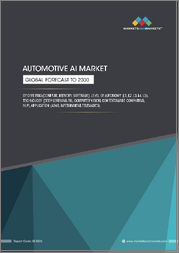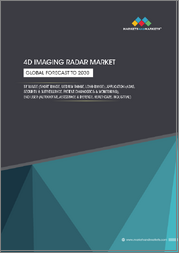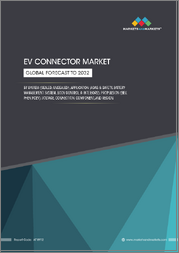
|
시장보고서
상품코드
1781576
세계의 첨단운전자보조시스템(ADAS) 시장 조사 보고서 : 산업 분석, 규모, 점유율, 성장, 동향, 예측(2025-2033년)Global Advanced Driver Assistance System (ADAS) Market Research Report- Industry Analysis, Size, Share, Growth, Trends and Forecast 2025 to 2033 |
||||||
세계의 ADAS(첨단운전자보조시스템) 시장 규모는 2024년 809억 달러에서 2033년에는 4,517억 9,000만 달러로 성장할 것으로 예측되며, 2026-2033년의 예측 기간 중 21.06%의 견고한 연평균 성장률(CAGR)을 나타냅니다.
첨단운전자보조시스템(ADAS) 시장은 자동차 산업이 안전과 자동화를 점점 더 우선순위에 두게 되면서 괄목할 만한 성장세를 보이고 있습니다. 전 세계에서 자율주행차에 대한 관심이 높아지면서 어댑티브 크루즈 컨트롤, 차선 유지 보조, 자동 긴급 제동과 같은 ADAS 기술이 신차에 기본으로 장착되고 있습니다. 이러한 변화는 안전과 편의성 향상에 대한 소비자의 요구와 교통사고 감소를 위한 규제 당국의 압력에 의해 추진되고 있습니다. 제조업체들이 연구개발에 투자함에 따라 인공지능과 머신러닝이 ADAS에 통합되어 차량 기능이 더욱 강화되고, 보다 연결되고 지능적인 운전 경험을 위한 길을 열게 될 것입니다.
또한 전기자동차(EV)의 등장은 ADAS 시장에 큰 영향을 미치고 있습니다. 전기자동차 보급이 가속화됨에 따라 각 제조업체들은 자사 제품의 차별화를 위해 첨단 안전기능을 탑재하고 있습니다. ADAS와 EV 기술의 시너지 효과는 차량 성능을 향상시킬 뿐만 아니라 지속가능성 목표에 부합하며, 환경 친화적인 소비자들에게 어필할 수 있습니다. 또한 자동차 제조업체와 기술 기업 간의 파트너십을 통해 혁신을 촉진하고, 자동차의 안전과 사용자 경험을 향상시키는 차세대 ADAS 솔루션을 개발하고 있습니다. 기업은 경쟁력을 유지하기 위해 첨단 기술 활용을 모색하고 있으며, 이러한 협력적 접근이 시장 확대를 촉진할 것으로 예측됩니다.
또한 진화하는 규제 상황이 ADAS 시장의 미래를 형성하고 있습니다. 세계 각국 정부는 더욱 엄격한 안전 기준을 도입하고 있으며, 제조업체들은 첨단 운전 보조 기술을 채택할 수밖에 없습니다. 이러한 규제가 더욱 종합적으로 적용됨에 따라 ADAS에 대한 수요가 급증하고, 공급망 전반에 걸쳐 성장 기회를 창출할 것으로 예측됩니다. ADAS 시장의 미래는 지속적인 기술 혁신, 스마트 기술 통합의 확대, 교통안전 강화에 대한 노력으로 특징지어질 것이며, 궁극적으로 자동차에 대한 인식과 관여 방식을 변화시킬 것입니다.
당사의 보고서는 고객에게 다양한 산업과 시장에 대한 종합적이고 실용적인 인사이트를 제공하기 위해 세심하게 작성되었습니다. 각 보고서는 시장 상황을 완전히 이해하기 위해 몇 가지 중요한 요소를 포함하고 있습니다.
시장 개요: 정의, 분류, 산업 현황 등 시장에 대한 자세한 소개.
시장 역학: 시장 성장에 영향을 미치는 주요 촉진요인, 억제요인, 기회 및 과제를 상세하게 분석합니다. 이 섹션에서는 기술 발전, 규제 변화, 새로운 동향 등의 요인을 살펴봅니다.
세분화 분석 : 제품 유형, 용도, 최종사용자, 지역 등의 기준에 따라 시장을 명확한 부문으로 세분화합니다. 이 분석을 통해 각 부문의 실적과 미래성을 파악할 수 있습니다.
경쟁 구도: 시장 점유율, 제품 포트폴리오, 전략적 구상, 재무 실적 등 주요 시장 기업의 종합적인 평가. 주요 기업이 채택하고 있는 경쟁 역학 및 주요 전략에 대한 인사이트을 제공합니다.
시장 예측 : 과거 데이터와 현재 시장 상황을 바탕으로 일정 기간 시장 규모와 성장 추세를 예측합니다. 여기에는 정량적 분석과 미래 시장 궤적을 보여주는 그래프 표시가 포함됩니다.
지역별 분석 : 지역별 시장 성과를 평가하고 주요 시장 및 지역 동향을 파악합니다. 지역 시장 역학 및 비즈니스 기회를 이해하는 데 도움이 됩니다.
새로운 동향과 기회 : 현재 시장 동향과 새로운 시장 동향, 기술 혁신, 잠재적 투자 대상 분야를 파악합니다. 미래 시장 개발과 성장 전망에 대한 인사이트를 제공합니다.
목차
제1장 서문
제2장 개요
- 시장의 하이라이트
- 세계 시장 스냅숏
제3장 ADAS(첨단운전자보조시스템) 산업 분석
- 서론 : 시장 역학
- 시장 성장 촉진요인
- 시장 성장 억제요인
- 시장 기회
- 업계 동향
- Porter's Five Forces 분석
- 시장의 매력 분석
제4장 밸류체인 분석
- 밸류체인 분석
- 원재료 분석
- 원재료 리스트
- 원재료 제조업체 리스트
- 주요 원재료의 가격 동향
- 잠재적 바이어 리스트
- 마케팅 채널
- 다이렉트 마케팅
- 인다이렉트 마케팅
- 마케팅 채널 발전 동향
제5장 세계의 ADAS(첨단운전자보조시스템) 시장 분석 : 엔진 유형별
- 엔진 유형별 개요
- 엔진 유형별 과거 및 예측 데이터 분석
- 내연 엔진
- 전기 엔진
제6장 세계의 ADAS(첨단운전자보조시스템) 시장 분석 : 제공별
- 개요 제공별
- 제공별 과거·예측 데이터 분석
- 하드웨어
- 소프트웨어
제7장 세계의 ADAS(첨단운전자보조시스템) 시장 분석 : 차종별
- 차종별 개요
- 차종별 과거 및 예측 데이터 분석
- 승용차
- 소형 상용차(LCV)
- 대형 상용차(HCV)
제8장 세계의 ADAS(첨단운전자보조시스템) 시장 분석 : 탑재 센서별
- 개요 : 탑재 센서별
- 탑재 센서별 과거·예측 데이터 분석
- 영상 센서
- 레이더 센서
- 레이저 센서
- 초음파 센서
- 적외선 센서
- 정전용량식 센서
- 생체인식 센서
제9장 세계의 ADAS(첨단운전자보조시스템) 시장 분석 : 용도별
- 개요 : 용도별
- 과거 및 예측 데이터 분석 : 용도별
- 어댑티브 크루즈 컨트롤(ACC)
- 사각지대 모니터
- 충돌 회피 시스템(프리 크래시 시스템)
- 운전자 모니터링 시스템
- 기타
제10장 세계의 ADAS(첨단운전자보조시스템) 시장 분석 : 지역별
- 지역별 전망
- 서론
- 북미의 판매 분석
- 개요, 실적과 예측
- 북미 : 부문별
- 북미 국가별
- 미국
- 캐나다
- 멕시코
- 유럽의 판매 분석
- 개요, 실적과 예측
- 유럽 부문별
- 유럽 국가별
- 영국
- 프랑스
- 독일
- 이탈리아
- 러시아
- 기타 유럽
- 아시아태평양의 판매 분석
- 개요, 실적과 예측
- 아시아태평양 부문별
- 아시아태평양 국가별
- 중국
- 인도
- 일본
- 한국
- 호주
- 동남아시아
- 기타 아시아태평양
- 라틴아메리카의 판매 분석
- 개요, 실적과 예측
- 라틴아메리카 : 부문별
- 라틴아메리카 국가별
- 브라질
- 아르헨티나
- 페루
- 칠레
- 기타 라틴아메리카
- 중동 및 아프리카의 판매 분석
- 개요, 실적과 예측
- 중동 및 아프리카 부문별
- 중동 및 아프리카 국가별 리스트
- 사우디아라비아
- 아랍에미리트
- 이스라엘
- 남아프리카공화국
- 기타 중동 및 아프리카
제11장 첨단운전자보조시스템(ADAS) 기업의 경쟁 구도
- ADAS(첨단운전자보조시스템) 시장 경쟁
- 파트너십/제휴/합의
- 합병·인수
- 신제품 발표
- 기타 개발
제12장 기업 개요
- 상위 기업의 시장 점유율 분석
- 시장 집중도
- Continental AG
- Texas Instruments Incorporated
- Magna International Inc.
- Mobileye Technologies Limited
- VOXX Electronics Corp.
- ZF Friedrichshafen AG
- Robert Bosch GmbH
- Denso Corporation
- BorgWarner
- Valeo
Global Advanced Driver Assistance System (ADAS) Market size is anticipated to grow from USD 80.9 Billion in 2024 to USD 451.79 Billion by 2033, showcasing a robust Compound Annual Growth Rate (CAGR) of 21.06% during the forecast period of 2026 to 2033.
The Advanced Driver Assistance System (ADAS) market is set for remarkable growth as the automotive industry increasingly prioritizes safety and automation. With the global push towards autonomous vehicles, ADAS technologies such as adaptive cruise control, lane-keeping assistance, and automatic emergency braking are becoming standard features in new vehicles. This shift is driven by consumer demand for enhanced safety and convenience, as well as regulatory pressures aimed at reducing road accidents. As manufacturers invest in research and development, the integration of artificial intelligence and machine learning into ADAS will further enhance vehicle capabilities, paving the way for a more connected and intelligent driving experience.
In addition, the rise of electric vehicles (EVs) is significantly influencing the ADAS market. As EV adoption accelerates, manufacturers are increasingly incorporating advanced safety features to differentiate their offerings. The synergy between ADAS and EV technology not only improves vehicle performance but also aligns with sustainability goals, appealing to environmentally conscious consumers. Furthermore, partnerships between automotive manufacturers and technology firms are fostering innovation, leading to the development of next-generation ADAS solutions that enhance vehicle safety and user experience. This collaborative approach is expected to drive market expansion, as companies seek to leverage cutting-edge technologies to stay competitive.
Moreover, the evolving regulatory landscape is shaping the future of the ADAS market. Governments worldwide are implementing stricter safety standards, compelling manufacturers to adopt advanced driver assistance technologies. As these regulations become more comprehensive, the demand for ADAS is projected to surge, creating opportunities for growth across the supply chain. The future of the ADAS market will be characterized by continuous innovation, increased integration of smart technologies, and a commitment to enhancing road safety, ultimately transforming the way we perceive and interact with vehicles.
Our reports are meticulously crafted to provide clients with comprehensive and actionable insights into various industries and markets. Each report encompasses several critical components to ensure a thorough understanding of the market landscape:
Market Overview: A detailed introduction to the market, including definitions, classifications, and an overview of the industry's current state.
Market Dynamics: In-depth analysis of key drivers, restraints, opportunities, and challenges influencing market growth. This section examines factors such as technological advancements, regulatory changes, and emerging trends.
Segmentation Analysis: Breakdown of the market into distinct segments based on criteria like product type, application, end-user, and geography. This analysis highlights the performance and potential of each segment.
Competitive Landscape: Comprehensive assessment of major market players, including their market share, product portfolio, strategic initiatives, and financial performance. This section provides insights into the competitive dynamics and key strategies adopted by leading companies.
Market Forecast: Projections of market size and growth trends over a specified period, based on historical data and current market conditions. This includes quantitative analyses and graphical representations to illustrate future market trajectories.
Regional Analysis: Evaluation of market performance across different geographical regions, identifying key markets and regional trends. This helps in understanding regional market dynamics and opportunities.
Emerging Trends and Opportunities: Identification of current and emerging market trends, technological innovations, and potential areas for investment. This section offers insights into future market developments and growth prospects.
SEGMENTATION COVERED IN THE REPORT
By Type of Engine
- Internal Combustion Engine
- Electric engine
By Offering
- Hardware
- Software
By Vehicle Type
- Passenger Vehicle
- Light Commercial Vehicle (LCV)
- Heavy Commercial Vehicle (HCV)
By Sensors Installed
- Image sensors
- Radar sensors
- Laser sensors
- Ultrasonic sensors
- Infrared sensors
- Capacitive sensor
- Biometric sensor
By Application
- Adaptive cruise control (ACC)
- Blind spot monitor
- Collision avoidance system (Pre-crash system)
- Driver monitoring system
- Others
- COMPANIES PROFILED
- Continental AG
- Texas Instruments Incorporated
- Magna International Inc.
- Mobileye Technologies Limited
- VOXX Electronics Corp.
- ZF Friedrichshafen AG
- Robert Bosch GmbH
- Denso Corporation
- BorgWarner
- Valeo.
- The above list can be customized.
TABLE OF CONTENTS
1. PREFACE
- 1.1. Report Description
- 1.1.1 Objective
- 1.1.2 Target Audience
- 1.1.3 Unique Selling Proposition (USP) & offerings
- 1.2. Research Scope
- 1.3. Research Methodology
- 1.3.1 Market Research Process
- 1.3.2 Market Research Methodology
2. EXECUTIVE SUMMARY
- 2.1. Highlights of Market
- 2.2. Global Market Snapshot
3. ADVANCED DRIVER ASSISTANCE SYSTEM (ADAS) INDUSTRY ANALYSIS
- 3.1. Introduction - Market Dynamics
- 3.2. Market Drivers
- 3.3. Market Restraints
- 3.4. Opportunities
- 3.5. Industry Trends
- 3.6. Porter's Five Force Analysis
- 3.7. Market Attractiveness Analysis
- 3.7.1 Market Attractiveness Analysis By Type of Engine
- 3.7.2 Market Attractiveness Analysis By Offering
- 3.7.3 Market Attractiveness Analysis By Vehicle Type
- 3.7.4 Market Attractiveness Analysis By Sensors Installed
- 3.7.5 Market Attractiveness Analysis By Application
- 3.7.6 Market Attractiveness Analysis By Regions
4. VALUE CHAIN ANALYSIS
- 4.1. Value Chain Analysis
- 4.2. Raw Material Analysis
- 4.2.1 List of Raw Materials
- 4.2.2 Raw Material Manufactures List
- 4.2.3 Price Trend of Key Raw Materials
- 4.3. List of Potential Buyers
- 4.4. Marketing Channel
- 4.4.1 Direct Marketing
- 4.4.2 Indirect Marketing
- 4.4.3 Marketing Channel Development Trend
5. GLOBAL ADVANCED DRIVER ASSISTANCE SYSTEM (ADAS) MARKET ANALYSIS BY TYPE OF ENGINE
- 5.1. Overview By Type of Engine
- 5.2. Historical and Forecast Data Analysis By Type of Engine
- 5.3. Internal Combustion Engine Historic and Forecast Sales By Regions
- 5.4. Electric engine Historic and Forecast Sales By Regions
6. GLOBAL ADVANCED DRIVER ASSISTANCE SYSTEM (ADAS) MARKET ANALYSIS BY OFFERING
- 6.1. Overview By Offering
- 6.2. Historical and Forecast Data Analysis By Offering
- 6.3. Hardware Historic and Forecast Sales By Regions
- 6.4. Software Historic and Forecast Sales By Regions
7. GLOBAL ADVANCED DRIVER ASSISTANCE SYSTEM (ADAS) MARKET ANALYSIS BY VEHICLE TYPE
- 7.1. Overview By Vehicle Type
- 7.2. Historical and Forecast Data Analysis By Vehicle Type
- 7.3. Passenger Vehicle Historic and Forecast Sales By Regions
- 7.4. Light Commercial Vehicle (LCV) Historic and Forecast Sales By Regions
- 7.5. Heavy Commercial Vehicle (HCV) Historic and Forecast Sales By Regions
8. GLOBAL ADVANCED DRIVER ASSISTANCE SYSTEM (ADAS) MARKET ANALYSIS BY SENSORS INSTALLED
- 8.1. Overview By Sensors Installed
- 8.2. Historical and Forecast Data Analysis By Sensors Installed
- 8.3. Image sensors Historic and Forecast Sales By Regions
- 8.4. Radar sensors Historic and Forecast Sales By Regions
- 8.5. Laser sensors Historic and Forecast Sales By Regions
- 8.6. Ultrasonic sensors Historic and Forecast Sales By Regions
- 8.7. Infrared sensors Historic and Forecast Sales By Regions
- 8.8. Capacitive sensor Historic and Forecast Sales By Regions
- 8.9. Biometric sensor Historic and Forecast Sales By Regions
9. GLOBAL ADVANCED DRIVER ASSISTANCE SYSTEM (ADAS) MARKET ANALYSIS BY APPLICATION
- 9.1. Overview By Application
- 9.2. Historical and Forecast Data Analysis By Application
- 9.3. Adaptive cruise control (ACC) Historic and Forecast Sales By Regions
- 9.4. Blind spot monitor Historic and Forecast Sales By Regions
- 9.5. Collision avoidance system (Pre-crash system) Historic and Forecast Sales By Regions
- 9.6. Driver monitoring system Historic and Forecast Sales By Regions
- 9.7. Others Historic and Forecast Sales By Regions
10. GLOBAL ADVANCED DRIVER ASSISTANCE SYSTEM (ADAS) MARKET ANALYSIS BY GEOGRAPHY
- 10.1. Regional Outlook
- 10.2. Introduction
- 10.3. North America Sales Analysis
- 10.3.1 Overview, Historic and Forecast Data Sales Analysis
- 10.3.2 North America By Segment Sales Analysis
- 10.3.3 North America By Country Sales Analysis
- 10.3.4 United States Sales Analysis
- 10.3.5 Canada Sales Analysis
- 10.3.6 Mexico Sales Analysis
- 10.4. Europe Sales Analysis
- 10.4.1 Overview, Historic and Forecast Data Sales Analysis
- 10.4.2 Europe By Segment Sales Analysis
- 10.4.3 Europe By Country Sales Analysis
- 10.4.4 United Kingdom Sales Analysis
- 10.4.5 France Sales Analysis
- 10.4.6 Germany Sales Analysis
- 10.4.7 Italy Sales Analysis
- 10.4.8 Russia Sales Analysis
- 10.4.9 Rest Of Europe Sales Analysis
- 10.5. Asia Pacific Sales Analysis
- 10.5.1 Overview, Historic and Forecast Data Sales Analysis
- 10.5.2 Asia Pacific By Segment Sales Analysis
- 10.5.3 Asia Pacific By Country Sales Analysis
- 10.5.4 China Sales Analysis
- 10.5.5 India Sales Analysis
- 10.5.6 Japan Sales Analysis
- 10.5.7 South Korea Sales Analysis
- 10.5.8 Australia Sales Analysis
- 10.5.9 South East Asia Sales Analysis
- 10.5.10 Rest Of Asia Pacific Sales Analysis
- 10.6. Latin America Sales Analysis
- 10.6.1 Overview, Historic and Forecast Data Sales Analysis
- 10.6.2 Latin America By Segment Sales Analysis
- 10.6.3 Latin America By Country Sales Analysis
- 10.6.4 Brazil Sales Analysis
- 10.6.5 Argentina Sales Analysis
- 10.6.6 Peru Sales Analysis
- 10.6.7 Chile Sales Analysis
- 10.6.8 Rest of Latin America Sales Analysis
- 10.7. Middle East & Africa Sales Analysis
- 10.7.1 Overview, Historic and Forecast Data Sales Analysis
- 10.7.2 Middle East & Africa By Segment Sales Analysis
- 10.7.3 Middle East & Africa By Country Sales Analysis
- 10.7.4 Saudi Arabia Sales Analysis
- 10.7.5 UAE Sales Analysis
- 10.7.6 Israel Sales Analysis
- 10.7.7 South Africa Sales Analysis
- 10.7.8 Rest Of Middle East And Africa Sales Analysis
11. COMPETITIVE LANDSCAPE OF THE ADVANCED DRIVER ASSISTANCE SYSTEM (ADAS) COMPANIES
- 11.1. Advanced Driver Assistance System (ADAS) Market Competition
- 11.2. Partnership/Collaboration/Agreement
- 11.3. Merger And Acquisitions
- 11.4. New Product Launch
- 11.5. Other Developments
12. COMPANY PROFILES OF ADVANCED DRIVER ASSISTANCE SYSTEM (ADAS) INDUSTRY
- 12.1. Top Companies Market Share Analysis
- 12.2. Market Concentration Rate
- 12.3. Continental AG
- 12.3.1 Company Overview
- 12.3.2 Company Revenue
- 12.3.3 Products
- 12.3.4 Recent Developments
- 12.4. Texas Instruments Incorporated
- 12.4.1 Company Overview
- 12.4.2 Company Revenue
- 12.4.3 Products
- 12.4.4 Recent Developments
- 12.5. Magna International Inc.
- 12.5.1 Company Overview
- 12.5.2 Company Revenue
- 12.5.3 Products
- 12.5.4 Recent Developments
- 12.6. Mobileye Technologies Limited
- 12.6.1 Company Overview
- 12.6.2 Company Revenue
- 12.6.3 Products
- 12.6.4 Recent Developments
- 12.7. VOXX Electronics Corp.
- 12.7.1 Company Overview
- 12.7.2 Company Revenue
- 12.7.3 Products
- 12.7.4 Recent Developments
- 12.8. ZF Friedrichshafen AG
- 12.8.1 Company Overview
- 12.8.2 Company Revenue
- 12.8.3 Products
- 12.8.4 Recent Developments
- 12.9. Robert Bosch GmbH
- 12.9.1 Company Overview
- 12.9.2 Company Revenue
- 12.9.3 Products
- 12.9.4 Recent Developments
- 12.10. Denso Corporation
- 12.10.1 Company Overview
- 12.10.2 Company Revenue
- 12.10.3 Products
- 12.10.4 Recent Developments
- 12.11. BorgWarner
- 12.11.1 Company Overview
- 12.11.2 Company Revenue
- 12.11.3 Products
- 12.11.4 Recent Developments
- 12.12. Valeo
- 12.12.1 Company Overview
- 12.12.2 Company Revenue
- 12.12.3 Products
- 12.12.4 Recent Developments



















